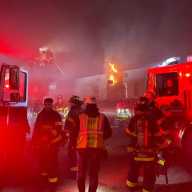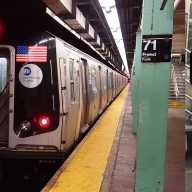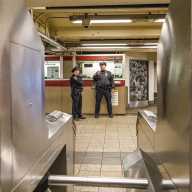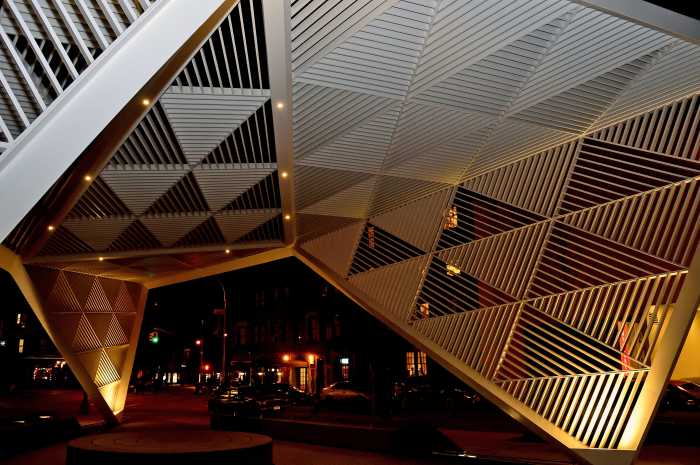By Denise Romano
The city is burning Superstorm Sandy tree debris at Floyd Bennett Field in order to convert it into reusable material, enraging environmentalists who claim that the burn-off will compromise air quality.
In a partnership with the U.S. Army Corps of Engineers, the Department of Environmental Protection (DEP) will burn more than 15,000 trees damaged by the storm, which will be converted into biofuel, mulch and landfill cover.
A six-day pilot program began on November 28, in which some of the debris is incinerated using an “air curtain burner,” which is a ceramic lined firebox about the size of a shipping container that uses large fans to make a “curtain” of air that prevents embers and ash from escaping. The Army Corps said they have already successfully used this method in Texas, Alabama and in Brookhaven on Long Island.
Air quality results will be closely monitored during the pilot program. Results from November 29, according to the U.S. Environmental Protection Agency (EPA), indicate that, “Monitored levels of fine particles, which were measured over a 24-hour period that included the pilot burn, met the EPA’s health-based standard for fine particles,” according to an update on the EPA’s website, that also indicates that the agency will do further testing on air samples in a laboratory, and report the results are they become available.
Although the EPA and city agencies are monitoring the process from eight different stations surrounding the area, environmental and health groups, including the American Lung Association of the Northeast, New York Public Interest Research Group (NYPIRG), Sierra Club Atlantic Chapter, New York Law and Environmental Justice Project and Citizens’ Environmental Coalition contend that the debris is detrimental to the city’s air quality.
Groups said the operation would emit at least 26 pollutants specified in the Clean Air Act as hazardous into the atmosphere.
“Approving this proposal to allow debris to be burned would add insult to injury. Many parts of our region are still cleaning up from Hurricane Sandy and are already dealing with major indoor air quality issues because of flooding, water damage and the resulting mold growth,” said Jeff Seyler, president and CEO of the American Lung Association of the Northeast. “This proposal would increase air pollution which can also make people sick and send them the hospital. We urge the city and state to use safe non-combustion alternatives when disposing the remaining waste.”
“It is a terrible waste to just burn the trees that came down during the storm into ashes and smoke,” said Laura Haight, senior environmental associate with NYPIRG. “There is a strong market for wood chips which can be used for garden mulch and a variety of other purposes. In this way, these casualties of the storm can be given a new life.”
Local leaders are also opposed, including Saul Needle, the chair of Community Board 18, which includes Floyd Bennett Field in its catchment area.
“Many years ago, the city banned the burning of leaves and trees because the bi-product is smoke, which contains carcinogens and various other not good things,” he explained. “I can’t see how over the course of time, these things have changed. I think it’s not a good thing to do.
“Regrettably,” Needle went on, “I can’t offer a viable solution, but I think before they do the burning, they should investigate so we don’t have pollutants wafting all over the air.”
































